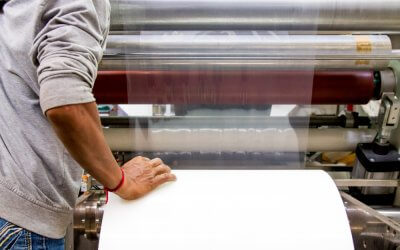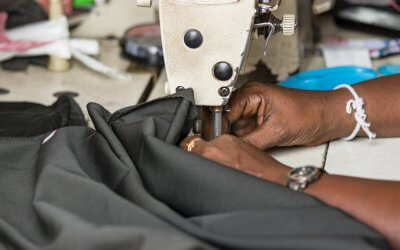For new e-commerce sellers, sending that first payment to a Chinese supplier can be confusing.
With all the different options available — Paypal, Alibaba Trade Assurance, LC payments, etc. — it can be hard to determine which one is appropriate for your situation.
You may have come across the term “T/T payment” and wondered exactly what it is and whether it’s the right choice for you.
In this article, we discuss some key things to understand about these payments, including the most important mistakes to avoid, how they compare to other payment options, and how to set the right payment terms.
Table of Contents
What is a T/T payment?
T/T stands for “Telegraphic Transfer” and this term is generally used to refer to an international wire transfer sent via the SWIFT system.
If you’re dealing with a factory or trading company based in Hong Kong or mainland China, they might request this type of payment. Generally, it can take between 1-5 days for your supplier to receive their money.
After the payment is sent from your bank, it might go through a network of intermediaries (incurring fees along the way), and then it will eventually reach your supplier’s bank.
How Do You Make a T/T Payment to a Chinese Company?
An international wire transfer can be made through your banking institution.

You can submit a T/T payment online.
Generally, this is done via the bank’s online portal or by filling out a form.
You input your supplier’s company name, address, account number, SWIFT code, etc. and then hit submit.
That may sound simple enough — but there are certain mistakes you have to be very careful to avoid.
Mistake #1 – Not typing in the full company name
Online wire transfer forms don’t always allow enough characters for you to type in the full name of the receiving company — Chinese company names are sometimes very long.
We’ve seen importers who had their wire transfers rejected after waiting several days for them to go through. Then, their payment got sent back to them, minus the fees they’d already paid, of course.
If the company name is too long to fit on one line, continue typing the rest of it on the address line. Double-check and triple-check that all information is 100% accurate.
You can also consider going into the physical bank branch if you have problems with online banking.
Mistake #2 – Paying the wrong entity
Payment scams are prevalent in China and sometimes well-meaning importers get taken advantage of.

Avoid falling for payment scams.
Be sure that if you sign a contract with a Chinese manufacturing company, the name of the company you send your payment to matches their name exactly.
If the name doesn’t match, do not send the payment.
There’s a common scam that many importers have been defrauded by.
A criminal hacks into the factory’s email account and sends a modified invoice on their behalf, but with different banking details.
Or, someone associated with the factory creates a separate entity and marks up the factory price.
Be careful about who you make your payment to.
Also, keep in mind that international wire transfers are not the only option.
How do T/T Payments Compare to Your Other Options?
The biggest downsides of wire transfers are that the fees can be quite high and there is no buyer protection.
Your bank charges you a fee for the transfer, there’s a markup on the exchange rate, and the receiving bank charges a fee as well.
Some of the other options you might consider when making supplier payments:
- Paypal – Not recommended for large purchases due to high fees, but this can be a good way to purchase samples or to place a small order with a new supplier as it provides some buyer protection.
- Alibaba Trade Assurance – Provides additional security for buyers and payments can be made with a credit card, but the credit card company will charge high transaction fees.
- LC (Letter of Credit) – This is only ideal for large corporations ordering millions of dollars worth of products at a time, as they are very complex to set up.
- International Payment Companies – Companies like OFX (who Insight has a partnership with) offer lower rates than banks and are easy to use. If your supplier accepts these payments, we recommend them over wire transfers.
Regardless of how you pay your supplier, you need to set acceptable payment terms.
Set the Right Payment Terms with Your Supplier
If a supplier requests a 100% payment upfront, recognize that this gives them far too much leverage over you as the buyer.
They could produce your products to a low standard and having already paid you’d be left with little recourse.
The products could travel on a cargo ship to your warehouse and by the time you realized how bad they were, it would already be too late.
A better arrangement is to pay a 30% deposit before the start of production and the remaining 70% after a passed QC inspection.
That inspection should be conducted by a neutral third party like Insight.
» Learn more about how third-party inspections work.
When you conduct an inspection before the final payment, you can be sure that the products your supplier sends to you do in fact meet your quality standards.
Also, keep in mind that payment types and terms are just some of the many challenges importers face when getting involved with international sourcing.
If you are working with a new factory and want to learn more about how to conduct a product inspection, we recommend downloading the following guide.
Free Guide
How to Prepare for an Inspection
Are you thinking of hiring a third-party inspection company? If so, you need to be properly prepared. No one knows your product better than you do. So, make sure you give your service provider the information they need to ensure that your inspections are a success. Download this free guide to successfully preparing for your product inspections.






Many China vendors want to sell products that they do not ship, and often their quote does not even include the information of the FOB location. How can a Canadian would-be purchaser proceed? How does a buyer even make contact with a transportation company in China and make arrangements for exit customs international shipping and import customs? If the vendor refuses to ship, refuses to quote shipping cost along with the sale?
Relying on a factory to arrange shipping, if they even offer or are willing, will most likely be more costly than utilizing a freight forwarder whose primary service is arranging the transportation for freight. Quotes should include the port and if not, ask the factory to confirm freight terms and the nearest port. Some ways to find a freight forwarder are searching online, ask your factory if they have a freight forwarder to recommend, utilize your government trade office for recommendations, referrals from your network or from your service providers.
document requirements to enable payment via a T/T telegraphic Transfer for an import from China
Please note that T/T generally refers to an international wire transfer. For document requirements, please contact your bank, and inform them you need to wire money to a company in China.